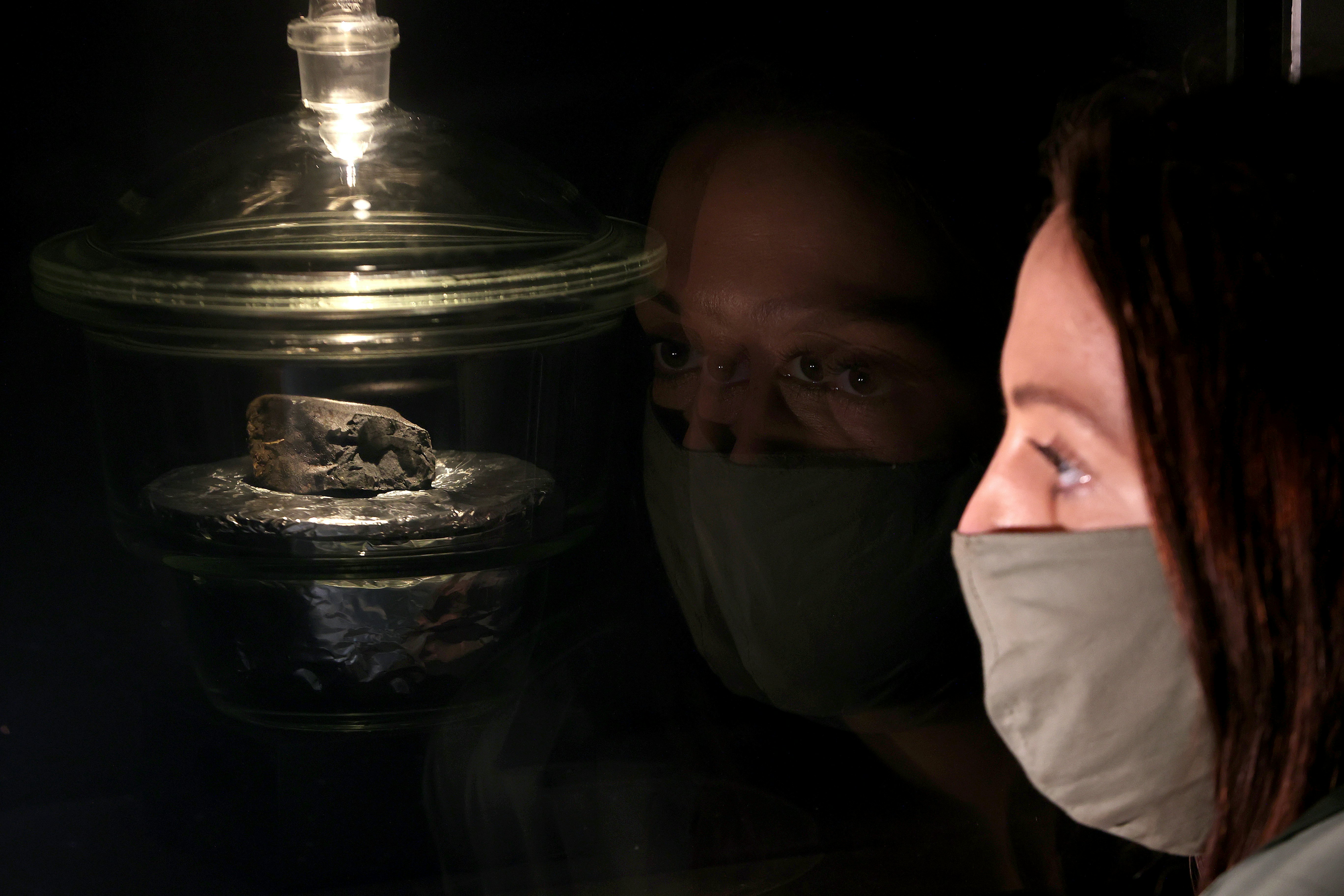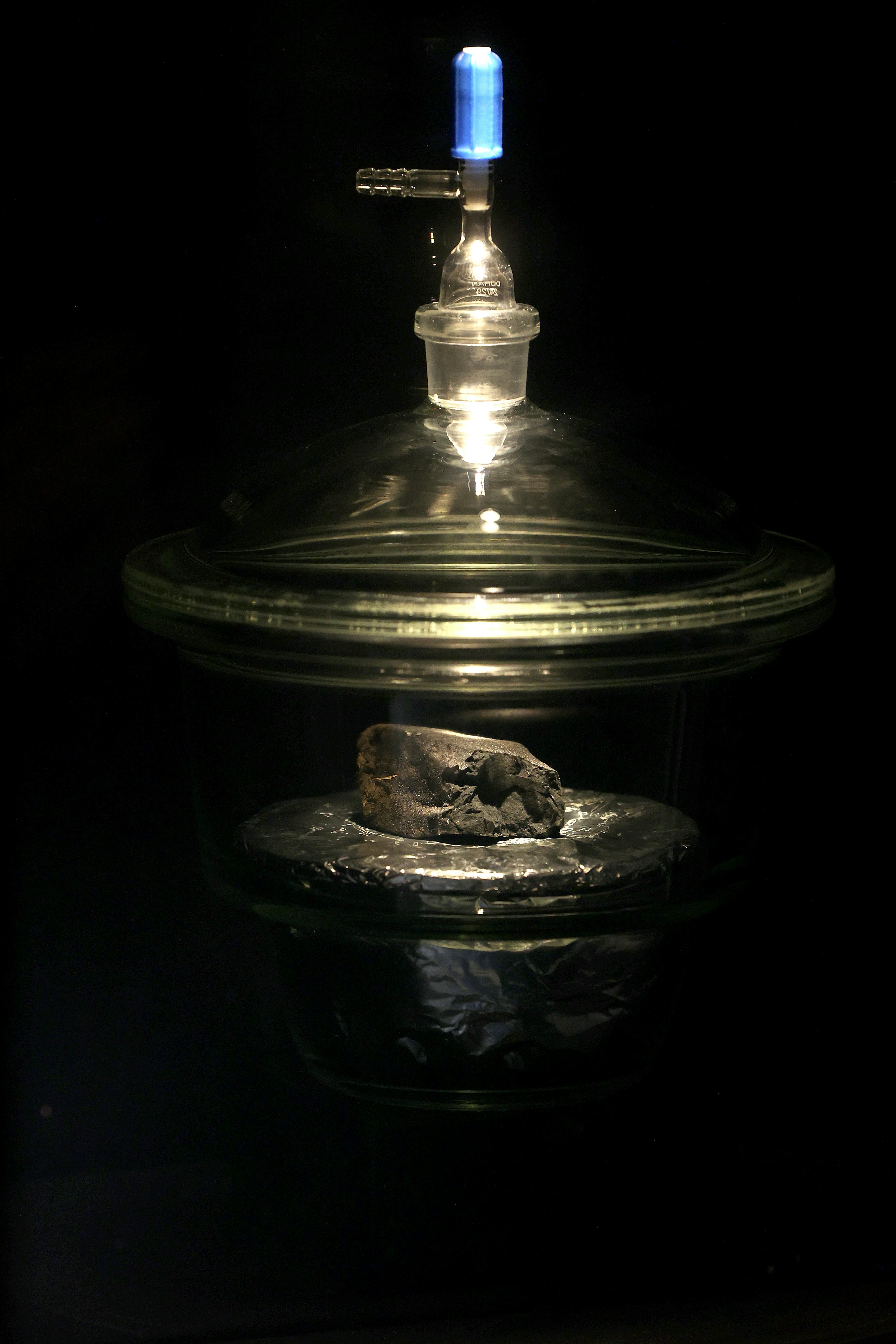
On February 28, 2021, England was amid the Covid-19 lockdowns when a fireball appeared for eight seconds in the clear night sky.
Its discovery is as much a slice of time as the rock itself. In lieu of recovering the culprit of the bright sight themselves while pandemic safety protocols and social distancing were in place, a team of astronomers rallied community support to find the meteorite. The blazing bolide appeared on 16 dedicated meteor cameras and produced more than a thousand eyewitness accounts.
As astronomers would later find out from its flight path and composition, the meteor evaded metamorphosis during the early Solar System’s evolution over millions of years. When Earth’s cosmic neighborhood was first coming together 4.5 billion years ago, there was a big cloud. Some material condensed together into the planets, heating up and stratifying their insides into cores, mantles, and crusts.
But unlike those building blocks, whose leftover rubble has also hailed down to Earth from the inner Solar System, the Winchcombe meteorite didn’t go through any of that — it remained largely in its original, unconglomerated state. The rapid communal search and recovery of the meteorite ensured it was a rather pristine specimen for Ashley King and his colleagues to study, whose conclusions appear in a new paper published this month in the journal Science Advances.

Who discovered it — King was initially alerted to the fireball via Twitter.
Upon learning about the meteor, King rallied his colleagues across the UK to put out the press release they’d had on deck for such an opportunity. Normally, they’d have gone out to recover this rock, a task King describes as finding a needle in a haystack.
In this case, lockdown boredom transformed into a grassroots undertaking, as King asked the public via a news outlet to search for black rocks on pavement or in their yards. Had a piece the size of an apple fallen in the countryside, finding it would be a challenge. But one meteorite from the fireball smacked into the driveway of the Wilcock family in Winchcombe, Gloucestershire. They knew what to do: put on gloves, recover the rock, and alert King’s team. The family members are listed as co-authors of the new paper.
Why it matters — “Having our most primitive material lets planetary geologists and astronomers better understand how this Solar System evolved and potentially explain why there is life on Earth. And that lets us better predict where we might expect life to be in the galaxy and Universe,” astrogeologist Gretchen Benedix tells Inverse.”
Some time ago, the Winchcombe meteorite broke off from a small, icy, primordial boulder known as a carbonaceous asteroid. They contain what Benedix describes as some of “the oldest materials we have.”

What they discovered — What astronomers know of carbonaceous meteorites is that their insides are 4.567 billion years old. But absent from almost all of these specimens is information about where they originate in the Solar System.
“It’s just like a random collection of rocks, and we have no context,” King tells Inverse. “We have loads of meteorites, and we know they’re all really different, but from nearly all of those, we don’t know whereabouts in the Solar System they come from.”
The Winchcombe meteorite avoided being lost to history like so many others when hundreds of spectators witnessed its fireball, and then when one keen family recovered it, preserving its fantastic condition.
In the paper, King and his colleagues describe the Winchcombe meteorite as “the most accurately recorded carbonaceous chondrite fall.” The inbound flight of this charcoal-colored rock narrows down where its parent body dwells, a gift of context to astronomers lucky enough to chance upon these relics from the Solar System’s first moments.
What they’ve found isn’t ultra-precise either, but it’s certainly a helpful place to start. Although they don’t know exactly which rock bore the Winchcombe meteorite, “we know that it came from an asteroid somewhere near Jupiter,” King tells Inverse.
What’s next — King is one of the fortunate astronomers that has gotten a look at samples from the near-Earth asteroid Ryugu, harvested straight from the rock when the Japan Aerospace Exploration Agency (JAXA) probe Hayabusa2 visited it in 2019. Two years ago, the mission dropped off a parcel of these samples to Earth.
NASA has an asteroid sample retrieval mission, too. OSIRIS-REx gathered samples from near-Earth asteroid Bennu in 2020, and is scheduled to drop off its samples to Earth next year.
“By studying Winchcombe and the Ryugu and Bennu samples next year, we can actually start mapping out the geology of the Solar System,” King said.
Ryugu and Winchcombe are from the outer Solar System, a frigid place where rocks have remained unscathed and ices have not melted. Time will tell what details astronomers can glean from sample retrieval missions, and Winchcombe’s free and natural delivery to Earth, about how our life-giving corner of the galaxy came to be.
Editor’s note: The original version of this article claims the meteor fell in 2019. The meteor actually fell in 2021. We regret the error.







